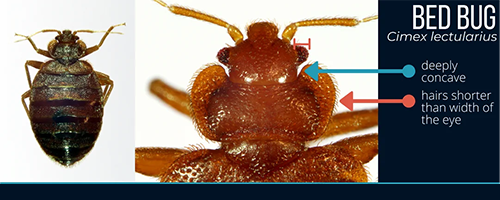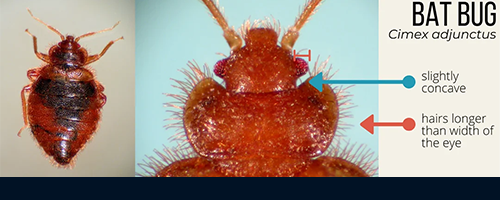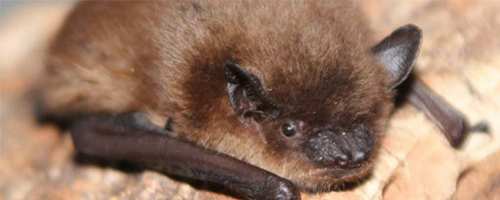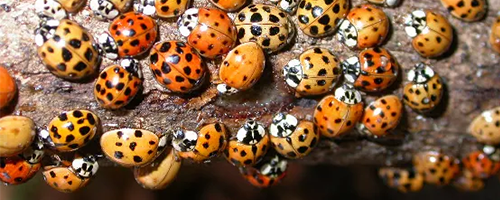Pest Control
The constant change in temperature can encourage rodents and other pests to seek shelter inside a building. While Facilities Services works to address the larger issue of pest control, there are things you can do to help reduce the chances of rodents and pests in your room. That starts with good sanitation: store all food in air-tight containers, do not leave dirty dishes in your room and keep your room clean of any crumbs, food particles and food wrappers. Also, keep all exterior doors shut and close your windows. Propping exterior doors is not only a policy violation but also an easy means for unwanted pests to access a residence hall.
This page highlights some common Iowa pests and what to do.
Bed bugs
The campus is at a greater risk of bed bugs anytime after a long academic break (i.e. spring break) due to the quantity of students traveling to tourist locations with bed bug infestations. The presence of bed bugs doesn't mean the student is a dirty person. Bed bugs are equal-opportunity biters and will live in any room no matter how conventionally clean. Professional extermination is required. Signs of bed bug are unexplained bites on your skin in straight rows, small bugs in your bedding or furniture, or tiny red or black dots on your sheets or mattress. Bed bugs like to hide in the crease of mattresses, gaps in bed furniture, electrical sockets, or corners of rooms.
If a student has bites and suspects bed bugs are in their room, they should schedule an appointment with the Health Center to help confirm what the bites are. If the Health Center staff, Campus Safety, or Facilities team member positively identifies a pest as a bed bug, staff will notify residence life staff immediately and collaborate with Facilities Services and our licensed, experienced pest control management company to inspect the room and design a treatment plan. Residents must not attempt to treat the problem with over-the-counter bug sprays.
When bed bugs are identified, students are to bag all clothing, bedding, and other soft materials and place them in one trash bag inside of another trash bag. The student shall wash all materials in the hottest washer water twice and dried on the hottest dryer setting twice. The trash bags are to be disposed of in an outside trash can.
Cornell College has an excellent record of immediate identification and extermination when in rare cases bed bugs are brought to campus. We take bed bugs seriously and prevent multi-room infestations with quick action than can start anytime 24/7. More often than not, reports of bed bugs are misidentified insects that are handled differently through our pest control partner.
Source: Bedbugs (WebMD)
Bat Bugs
Bed bugs and bat bugs are relatives, however are different insects. To the naked eye, the two bugs look the same. Physiological distinctness like bat bugs having longer fringe hairs on the upper part of their thorax than bed bugs can only be seen under a microscope. Bat bugs preferred bats and birds as their food source. Typically, they stay close to the bats and don't bother humans. But if bats leave their roost, the bugs will go looking for food.
Bat bugs are not dangerous to humans or animals. They're not known to transmit diseases. Their bites can be uncomfortable and cause itchy, raised patches similar to other types of insect bites. This happens because many people are allergic to an element in their saliva, so they react when they're exposed to it.
If a student suspects bat bugs are in their room, they follow the same protocol for bed bugs.
Sources: Bat bugs what to know (WebMD)
Bats
During fall in Iowa, bats look for warm places to live during the winter. Bats are also a protected species in Iowa and it is illegal to harm or kill them. While bats are integral parts of the environment, eating their weight in insects every night, they can carry diseases. Bats with confirmed rabies in Iowa is rare, but we are still vigilant.
If a bat is seen in a residence hall, immediately contact Campus Safety.
What constitutes a possible rabies exposure:
- There was a bite from animal to human
- There was saliva contact from an animal to a human’s open cut or mucus membrane
- A bat is found in the same room with a sleeping person, an unattended child, an intoxicated person, or anyone unable to confirm that they were not bitten. Finding a bat OUTSIDE of the room the person was in (i.e. in a hallway or on the other side of an open door) is not considered an exposure.
What will happen if you are exposed:
- Tell Campus Safety as soon as possible.
- Campus safety will attempt to capture the bat. Once captured the animal will be tested for rabies. (Shots may be delayed for up to 72 hours while waiting for results)
- If the bat is negative for rabies, no further action is needed.
- If the bat cannot be captured or tests positive for rabies, you will be referred for full post exposure prophylaxis (a series of rabies vaccines)
Source: Iowa bat questions answered (Pottawattamie County Conservation), Iowa Health & Human Services (Rabies)
Asian Beetles
These look-alike lady bugs are a unique beetle with different behaviors. In the fall, they will swarm campus windows and doors attempting to find entrance to escape the cold. They do not infest wood, destroy fabrics, eat food or damage other property. They do not carry disease.
Preventing entry by sealing window cracks with a gentle painter's tape or poster putty is a way for students to slow their arrival. Beetles that make it inside should be thrown in the trash with tissues or vacuumed up. On our campus, pesticides are not effective due to the sheer number of beetles. The bugs can climb over dead bugs and avoid applied pesticide which relies on physical contact to work. Still, regardless of their nuisance status, Asian beetles are beneficial to Iowa farmers and gardeners.
Soure: Multicolored Asian lady beetles (University of Minnesota)
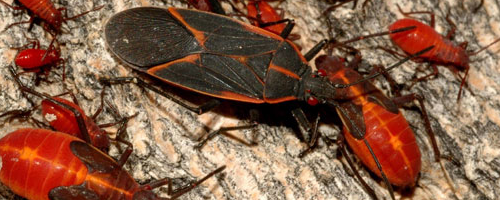
Boxelder Bugs
Boxelder bugs are a nuisance insect that do not cause damage to property or food. Their food source is tree sap. They seek warmer environments as the fall begins and that leads them inside. There is no easy way to determine when and where there will be a problem until it starts. By then it may be too late for effective treatment.
Preventing entry by sealing window cracks with a gentle painter's tape or poster putty is a way for students to slow their arrival. They are generally not killed by aerosol household insecticide products, and most residual insecticides are not of much benefit. A sure control for bugs already in the room is to remove them as they appear by vacuuming, sweeping or picking them up and discarding them.

